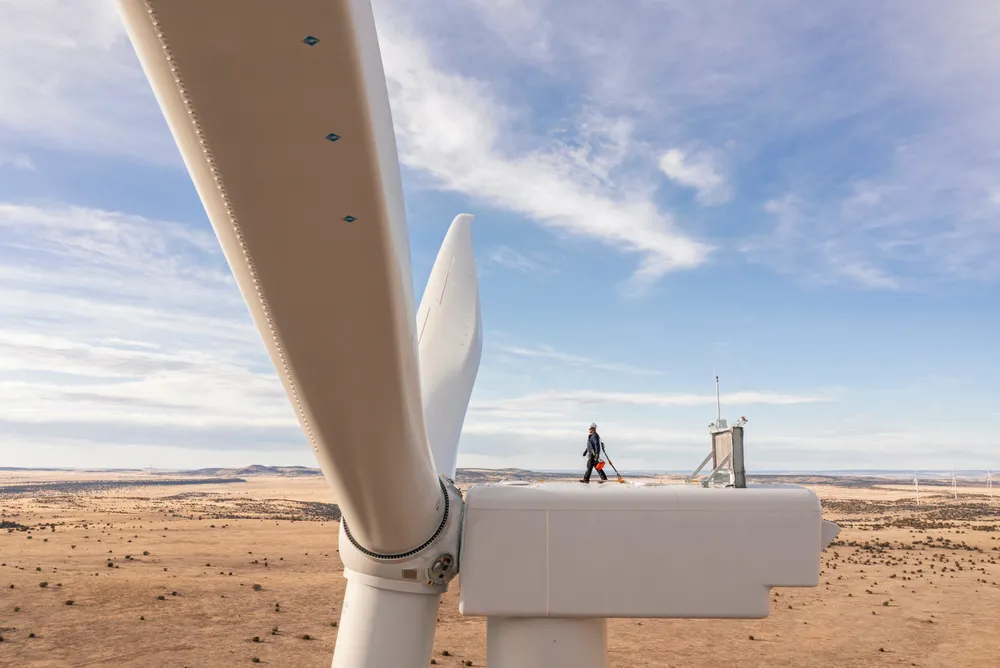GE Vernova CEO still waiting for US onshore wind 'inflection point'
Scott Strazik tells conference that onshore market set to be 'reasonably flat' business for turbine giant this year and next

CEO Scott Strazik said turbine market leader GE Vernova expects US onshore wind capacity additions this year in mid-single digit gigawatts, a “pretty small number,” and comparable to the disappointing 6.4GW in 2023.
The OEM also sees 2025 as continuing a relatively weak US onshore wind growth story although installations could reach high single digits, according to Strazik.
“That’s why we’ve been saying we see onshore wind being a reasonably flat business for us in both 2024 and 2025. Nothing has changed in that regard. I think that is our reality,” he told a conference held by Morgan Stanley on Thursday.
In 2026-27, the company’s customer pipeline in the US is “substantially higher than high single-digit gigawatt installations,” said Strazik, without providing numbers. While the pipeline is there, those deals are unlikely to close this quarter or next.
“I do believe you will start to see those orders close in 2025. That gives me confidence that 2026 from a revenue perspective is a very credible moment to start to see onshore wind have an inflection,” he noted. “But I’d like to see the orders start to come first.”
Strazik does expect third and fourth quarter orders in the US to improve versus first half this year, “but not yet at a level that supports that inflection point I’ve been referencing.”
He did not comment on why the US onshore wind market is sluggish compared with the three years of record activity in 2019-21.
In a recent report, American Clean Power Association, a national trade group, attributed the slowdown “primarily to supply chain issues, siting and permitting, as well as long interconnection queue wait times.”
Also playing a role was uncertainty over whether Congress would renew the main federal tax credit for onshore wind, which helped deplete developers’ stock of eligible near-term projects.
The Inflation Reduction Act (IRA), the nation’s landmark climate law signed by President Joe Biden in August 2022, did renew the production tax credit an unprecedented 10 years with adders that potentially make it more lucrative than previously.
In response, developers are in the process of rebuilding their project pipelines, but onshore wind now faces stiff cost competition from utility-scale solar in some areas of the country, along with natural gas.
With the IRA, GE Vernova, along with chief rival Vestas have been investing in the US in anticipation the onshore wind market will steadily grow through this decade. This positive outlook is also held by consultancies BloombergNEF, S&P Global, and Wood Mackenzie.
Onshore wind could ultimately benefit from expected growth in US electric power demand that will be driven by broader electrification of the national economy, new data centres, reshoring of manufacturing, and rising numbers of electric vehicles.
Strazik said because there is so much pressure in the near-term to add scale power quickly, GE Vernova’s natural gas turbine and electrification businesses will be bigger beneficiaries than onshore wind, which “will come over time.”
(Copyright)